
To be listed on the CAMPOSOL TODAY MAP please call +34 968 018 268.
article_detail
Spanish News Today Editors Roundup Weekly Bulletin June 7

TOP STORIES: "Look out for the Northern lights, visible from Spain this weekend!" and "Enormous 5-metre shark from the deep washes up in Spain"
Europe is heading to the polls. Nipping in ahead of the UK by a month, the elections to the European Parliament are taking place this weekend, which also happens to promise a brewing storm. Coincidence? I think not.
More about those winds (and the rain and the lightning) of change below, as well as the return of another curious meteorological phenomenon and more of the usual news and goings on from around Spain.
Weather you like it or not
We’re all very familiar with the concept of April showers and the idea of May roaring in like a lion only to trot out like a lamb, but come the month of June, we’re used to fairly predictable weather of sunny, hot days and balmy evenings. Sadly, June 2024 didn’t get the memo and we’ve got a couple of scorching days before the heavens open this weekend.
Up to this point, the weather has been pretty changeable and it doesn’t really feel as if summer has properly taken hold yet. But the thermometers say something different, and this past May was actually the hottest ever documented, according to the Copernicus Climate Change Service (C3S). Scorching heat raised the global average surface air temperature by 0.65°C above the 1991-2020 mean, breaking records for the twelfth straight month.
Shockingly, the global average temperature over the last twelve months (June 2023-May 2024) ranks as the highest ever recorded, a jarring 0.75°C leap above the 1991-2020 average, and 1.63°C higher than pre-industrial times (-1900).
This toasty trend is going to accompany us into the weekend, but it will be marred somewhat with thunder and lightning, hail storms and that dreaded muddy rain. This is because a DANA – an Isolated High Level Depression – is expected to sweep across the country from Portugal, wreaking havoc in its path.
But there will be an eerie calm before the storm, and several heat warnings have been issued on Thursday June 6 and Friday June 7 for sizzling temperatures upwards of 40ºC in the likes of Cordoba and Jaen in Andalucía. This swelteringly warm air mass will come loaded with suspended dust, which is what will cause that muddy sludge when the rain really begins to bucket down on Saturday and Sunday (June 8 and 9).
A dramatic cold drop is expected to hit Spain between this Friday and Saturday which will drag temperatures down by several degrees, and an Atlantic low will leave cloudy skies throughout the country and torrential rain in many parts.
This stormy episode will only strengthen as the hours go by and, while the temperatures could climb between Saturday and Sunday, the rain will become much more widespread. In effect, no part of Spain is safe from the deluge this weekend and more rain is forecast across next week too, including (thankfully) in the parched south.
But, for all that, there’s no reason why June can’t still turn out to be a record-breaking month, temperature-wise.
In fact, The World Meteorological Organisation (WMO) has warned that there’s an alarming 80% likelihood that global average annual temperatures will breach the critical +1.5°C threshold at least once in the next five years.
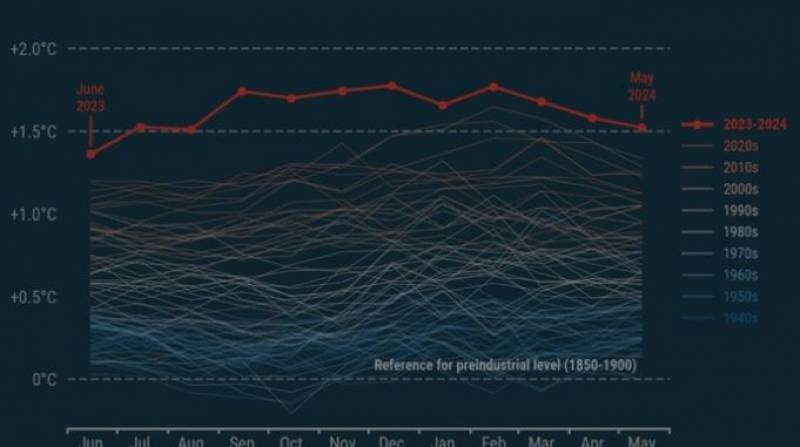
Most worryingly, the WMO Annual Ten-Year Global Update states that the probability of the five-year average temperature (2024-2028) overshooting the pre-industrial era by 1.5°C has jumped from 32% to 47%.
With this bleak forecast, UN chief António Guterres has issued an urgent call for drastic climate action before it’s too late.
“We are playing Russian Roulette with our planet,” he said.
“We need an exit ramp from the highway that leads to climate hell. And the good news is that we have control of the wheel. The battle to limit temperature rise to 1.5°C will be won or lost in the 2020s, under the watchful eye of current leaders.”
Northern sights
At the tail-end of May, stargazers in Spain were awestruck as the night sky was illuminated by dazzling streaks of purple and pink light. This was caused by the appearance of the elusive Northern Lights, a phenomenon normally only visible at more northern or southern extremes, like the Arctic and Antarctic.
Anyone who missed it is in luck, as this natural light show, also known as Aurora Borealis, is set to make another appearance this week. According to British astrophysicist Ryan French, the Lights were at their most breathtaking on Thursday June 6, but they should still be visible from Spain for a few days after that.
Now, the weather isn’t exactly playing ball this weekend, but if possible, get yourself to a dark spot well away from street lighting – a high point is best where buildings don’t obscure your view. You should be able to catch a glance of the celestial show at the darkest point of the night.
In May, social media was flooded with photos of the dramatically coloured sky and, while the spectacle in Spain perhaps wasn’t quite as impressive as the displays seen in the Arctic, it’s certainly a sight not to be missed. It has been recommended to look through your phone’s camera to be able to see the lights better as they may not be visible to the naked eye.
Up from the deep
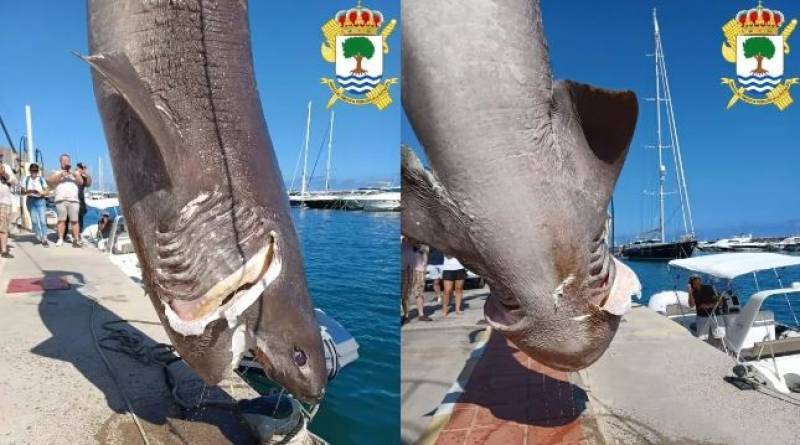
Alicante scientists were bowled over this week when they discovered not one, but two, incredibly rare species of shark in Altea and Elche. Sadly, both specimens were already dead when they washed up on the shores, but their bodies still provide an incredible opportunity for learning more about these elusive creatures.
The cañabota (Hexanchus griseus) or Bluntnose sixgill shark is the largest shark that lives on the Mediterranean seabed and has been known to reach depths of almost 2,000 metres. This scavenger shark, which feeds exclusively on the bodies of dead animals, is the only shark breed in the Mediterranean with six gill slits.
Since glimpses of the species are so uncommon, any data that can be gleaned from the dead sharks is invaluable to help scientists to better understand this deep-sea creature.
The Marine Zoology unit of the University of Valencia has set up what’s known as the VARACOMVAL project, which is made up of a group of dedicated experts whose mission is to learn everything they can about the cañabota.
Murcia
This Sunday is 9th June, and that’s the date every year when the Region of Murcia celebrates the fiestas of the entire autonomous community, El Día de la Region de Murcia. Each ‘comunidad autónoma’ in Spain has its own day of celebration, just as every city and town (collectively, ‘municipios’) has their own feast day.
Normally, the Region of Murcia Day is a festivo, a day off. And when these festivos fall on a Sunday, they are often transferred over to the following Monday. But not this year. Nope, we are not getting a day off work/school/shopping next Monday, for one simple reason.
See, there are certain national holidays that are common for the whole country and then every autonomous community and municipality gets to decide on the extra day or two it takes off during the year. The only thing is that this year, Murcia has already used up its comodín when it decided that it would take Tuesday March 19 off instead for the occasion of the Feast of San José, better known as Father’s Day in Spain.
That’s no reason not to celebrate Region of Murcia Day this Sunday, though! The Region’s president will likely make a speech for it, as will other politicians, but lay people could take the opportunity to enjoy a café asiático or a pastel de carne meat pie, typical products from this special corner of the country.
Terra Natura zoo and waterpark is celebrating, too, giving away a free child’s ticket for under 12s with every adult ticket bought over the course of the weekend, on both Saturday June 8 and Sunday 9, as a special deal for the regional day. You might want to book ahead as it could be busy!
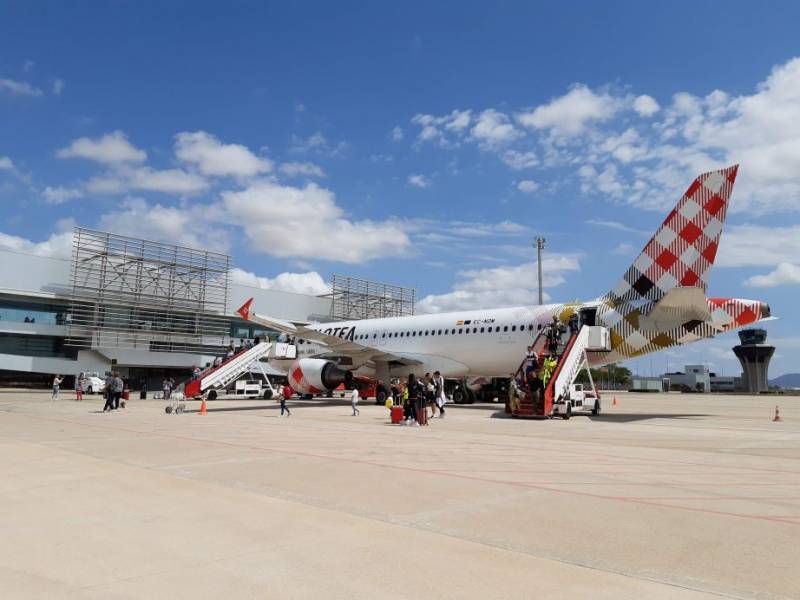 There is a new flight out of Murcia Airport that just started. This is the final addition to the summer flight roster at Corvera Airport, and is a Volotea flight to Bilbao, in the north of Spain. A lovely place, if you’ve never been, and good for an escape this summer to somewhere not quite so boiling. There will be twice weekly flights each way until the end of the summer, on Wednesdays and Sundays.
There is a new flight out of Murcia Airport that just started. This is the final addition to the summer flight roster at Corvera Airport, and is a Volotea flight to Bilbao, in the north of Spain. A lovely place, if you’ve never been, and good for an escape this summer to somewhere not quite so boiling. There will be twice weekly flights each way until the end of the summer, on Wednesdays and Sundays.It is still the foreign visitors, and especially the Brits, who are leading the way when it comes to tourist spending in Murcia, according to the most recent data from the National Institute of Statistics (INE). Foreign tourists spent a whopping 367.5 million euros in the Region between January and April of this year – an incredible 29.6% more than in the same period last year, and a number that has made Murcia the fourth fastest growing area for tourist spending in the country.
This is great news for Murcia, which is still something of a hidden gem for many foreign holidaymakers but which will welcome the boost in income. In the first quarter of this year, Murcia received 12% more foreign tourists than it did in the first quarter of 2023, and the amount of time each of them stayed was nearly double the national average!
The other three fastest growing communities in Spain, just ahead of Murcia, are Castilla-La Mancha, Cantabria and Galicia, none of which are traditionally thought of as big touristy areas like the Canary Islands, the Balearics or the Costa del Sol are. It goes to show that there is an appetite for alternative holiday destinations, but it is also true that these fast-growing areas, including Murcia, will have to act now if they want to feel the benefits of increased tourist spending while managing to cut off at the root the problems with overtourism that places like Tenerife and Mallorca are currently suffering.
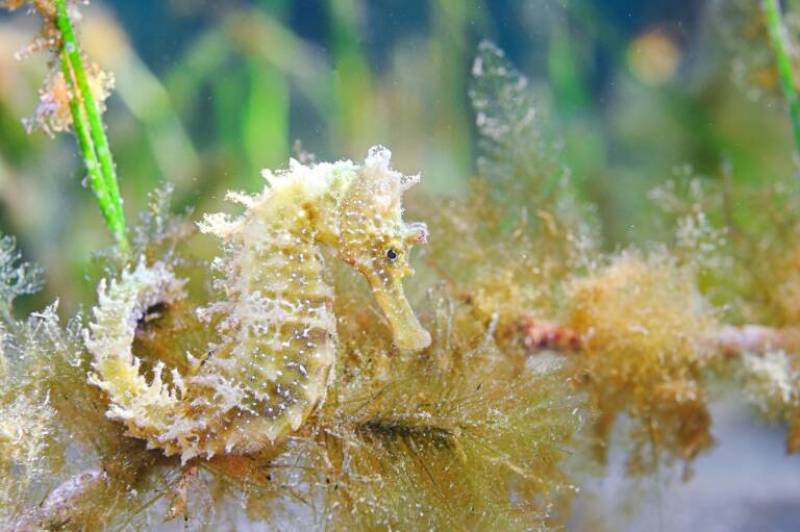 More good news for Murcia as a recent survey revealed that seahorse and ‘nacra’ populations in the Mar Menor could be on the rise. It is common knowledge that the lagoon has been mired in ecological misery for many years, and its flora and fauna have been the biggest victims of the nitrates and other contaminants that have washed into the water.
More good news for Murcia as a recent survey revealed that seahorse and ‘nacra’ populations in the Mar Menor could be on the rise. It is common knowledge that the lagoon has been mired in ecological misery for many years, and its flora and fauna have been the biggest victims of the nitrates and other contaminants that have washed into the water.Now, though, there is a quiet optimism amongst scientists as dozens of young seahorse and noble pen shell or fan mussel specimens have been found in the Mar Menor. Both of these species have seen their numbers dramatically depleted, especially the mussels, known in Spanish as ‘nacras’, which are the second largest bivalve in the world, growing to heights of over 1 metre. Their population in its natural habitat in the wild – the Mediterranean Sea – has fallen by 99% and it is on the verge of becoming extinct, so the fact that young specimens of this mussel from last year’s breeding event have been found, the first time in eight years that such a large group of them has been found in the Mar Menor, is extremely encouraging.
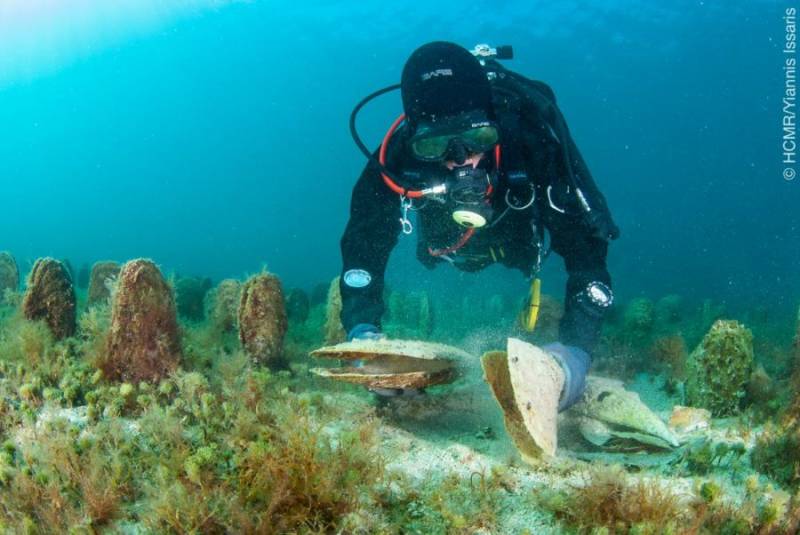
Back on dry land, the Adapt Theatre group, based in San Pedro del Pinatar, have already started rehearsals for this year’s Christmas panto. Although the title is still officially under wraps, it promises to be just as fun an affair as it always is. For the last 15 years, the Adapt Theatre group has been putting on annual bilingual pantos at Christmastime performed in English and Spanish, and if you haven’t seen one already then they’re highly recommended – stay tuned for more news about the panto coming up this year, and where and when to see it!
In the meantime, see our EVENTS DIARY for more events and activities coming up soon in the Region of Murcia:
Spain
The next few days are forecast to be a bit of a washout but despite the heavy skies summer is most definitely on the way and with it, tourist season. Still, Spain hasn’t been waiting around for July to draw in the holidaymakers, and the first four months of 2024 were busier and more lucrative for local businesses than ever.
The tourist data for Spain as a whole show that, between January and April, holidaymakers from abroad spent 22.6% more that in the first four months of 2023, bringing in more than 31.5 billion euros. This means that not only are more international travellers visiting Spain, they’re spending more money to boot.
Both the number of tourists arriving and the amount of money they spend confirms the unstoppable growth of the holiday market, and this is certainly due in large part to the popularity of the country with visitors from the UK, 4.4 million of whom descended on Spain in the first four months.
And while Britons continue to be the most frequent visitors to the Costas, they’re closely followed by Germany, the United States, Ireland and Belgium.
Between January and April, travellers from the United Kingdom spent an average of 163 euros per day on their visit, 11 euros more than in the first quarter of 2023, maintaining the average length of stay at around one week. In the case of Germans, the average daily expenditure per tourist has increased by 9 euros to 154 euros. Their average stay is slightly longer than that of the English, reaching 8.5 days.
 While the Spanish tourism sector seems to need little help to boom, the government is nevertheless making it easier – and much cheaper – for younger people to travel around the country, and further afield, this summer. They’ve reintroduced the Summer Youth 2024 Programme, an initiative that was hugely popular last year enabled more than 1.13 million young people between 18 and 30 years old to discover Spain. In total, four million trips were recorded between June 15 and September 15, of which 60% were made by rail and the rest by road.
While the Spanish tourism sector seems to need little help to boom, the government is nevertheless making it easier – and much cheaper – for younger people to travel around the country, and further afield, this summer. They’ve reintroduced the Summer Youth 2024 Programme, an initiative that was hugely popular last year enabled more than 1.13 million young people between 18 and 30 years old to discover Spain. In total, four million trips were recorded between June 15 and September 15, of which 60% were made by rail and the rest by road.But there’s a bonus: in 2023, the discounted bus and train travel was only open to European citizens born between 1994 and 2006 but this year, the huge savings can be enjoyed by Spanish residents of all nationalities.
The discounts will range from 90% for conventional medium-distance services and for regular state bus trips, up to 50% in Avant, High Speed AVE (with a maximum of 30 euros per ticket), as well as Global Flexible Interrail passes (travel of between 10 days and 2 months) sold by Renfe.
The initiative will run from July 1 until September 30.
But perhaps you’re looking for somewhere off the beaten track for your next holiday? How about a tiny island that practically no-one has ever heard of? You might think you have to sail to the outer reaches of the Earth to find such a paradise, but what if we told you it was just a hop and a jump from mainland Spain?
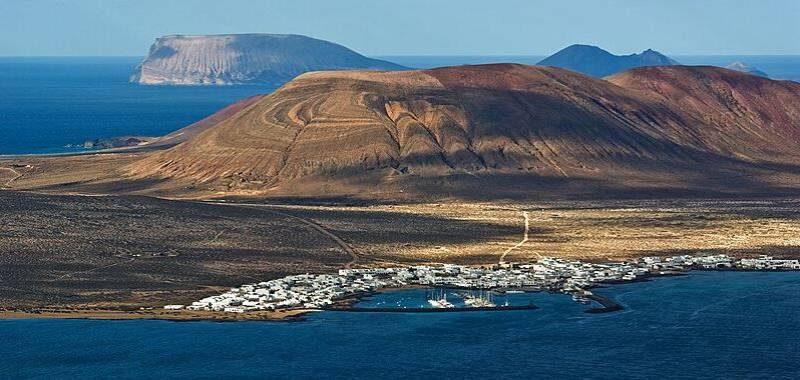
Until now, the Canary archipelago was made up of seven islands: La Palma, Tenerife, Fuerteventura, El Hierro, La Gomera, Gran Canaria and Lanzarote. But about five years ago, a popular movement began the procedures to achieve recognition for La Graciosa as an independent community and this week, it became the eighth Canary Island.
Measuring about eight kilometres in length with a total area of just 29 square kilometres, La Graciosa has been gaining popularity over the years due to its breath-taking beauty and impressive marine reserve, drawing tourists and environmentalists alike.
With a gentle climate averaging a comfortable 20°C all year round, La Graciosa boasts inviting turquoise waters and sandy beaches. Coupled with favourable trade winds and a balmy 78% humidity level, the island is a true haven for water sports enthusiasts and nature lovers alike.
Alicante
A year and a half after they were ‘temporarily’ shut down, three popular beach bars in the Orihuela Costa remain closed: Punta Prima beach, Cala la Mosca or Cala Estaca. The rest have thankfully started trading again after the convoluted contracting issues were finally sorted out, but there’s no opening date in sight for the remaining trio.
This year, the running of the beach bars in Orihuela Costa, along with the sunbeds and umbrellas, was divided up into separate lots. The unopened facilities correspond to lot 1, which has been awarded to a new management team for four years at a cost of 2.5 million euros. Under the regulations, each owner can only run two lots each.
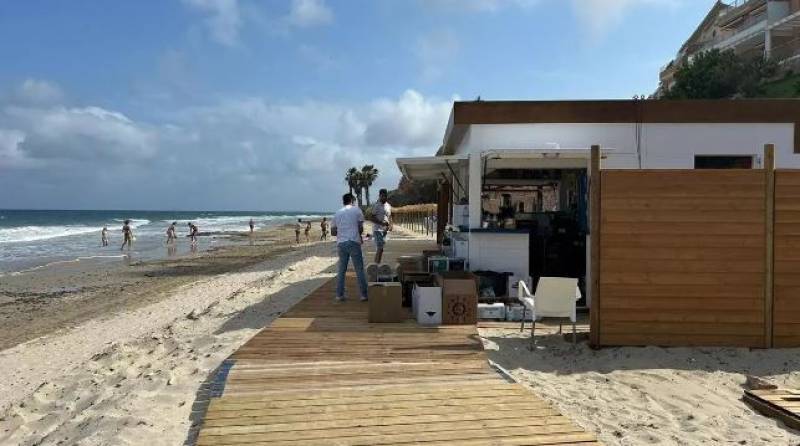
But there are two problems. Firstly, the company that won the tender, Taberna Garcana, has not yet provided the documentation to formalise the contract. Secondly, and more importantly, the company that won lot 4 and is in second position in lot 2 has lodged an appeal demanding to be reconsidered for these beaches, as it claims that the owner has been awarded three contracts rather than two.
If everything had gone to plan, the three beaches should have had their bars up and running by May 15 at the very latest but for now, the start date is anyone’s guess.
Quite aside from the relatively trivial issue of a lack of chiringuitos, it’s been a horribly tragic week on Orihuela Costa beaches, where four swimmers have lost their lives in the space of just three days.
Two men, aged 81 and 76, died on Monday June 3 while swimming on the beaches of Calpe and Orihuela Costa and on the previous Saturday, a 48-year-old perished in Benissa and a day later another 50-year-old man lost his life on La Marina beach in Elche.
Thankfully, this horrifying number was prevented from climbing to five when lifeguards rescued another bather in Benidorm.
The Calpe fatality occurred at around 3pm on Arenal-Bol beach. An 81-year-old Belgian citizen was bathing when he began to feel unwell and tried to get to shore. However, he passed out in the water and was pulled to safety, unconscious. Emergency workers performed CPR but the man was unresponsive and eventually pronounced dead.
On the same day, a 76-year-old Irish man was dragged from the surf by another swimmer on Orihuela Costa’s Cala Capitan. Sadly though, he couldn’t be saved.
Further up the coast in Valencia, shocked beachgoers on Playa de Pinedo in Valencia watched on in awe as an enormous luxury yacht flying a British flag ran aground just metres from the shoreline.
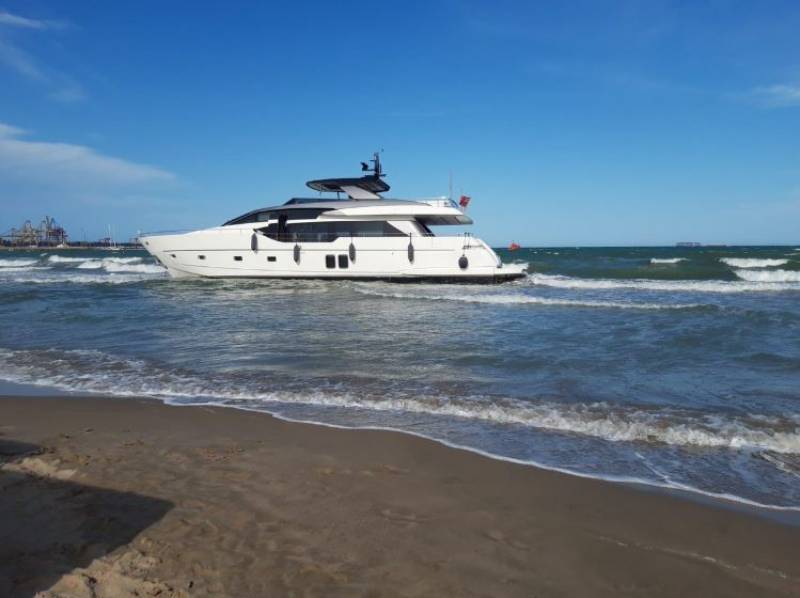
According to officials, the UK-owned ‘Nordic Lily’ was heading for the Valencia Yacht Club when she sprung a leak and became stranded. Around the same time, the captain of the vessel became seriously ill and had to be airlifted to the La Fe Hospital in Valencia by the Helimer 203 Maritime Rescue helicopter.
On Monday June 5, the Maritime Captaincy sailed out to the yacht with the view to towing it to shore, but the extent of the damage meant that the ship was firmly stuck. Instead, the following day a specialist team was sent on board to carry out temporary repairs that would allow the ship to float to safety.
Andalucía
I don’t want to alarm you but a recent scientific study has revealed that the Strait of Gibraltar could disappear in the future, and it’s not because of Brexit. Rather, it is due to the movement of the subduction zone separating the Eurasian and African plates. This zone, previously considered inactive, is gradually shifting towards the Atlantic Ocean.
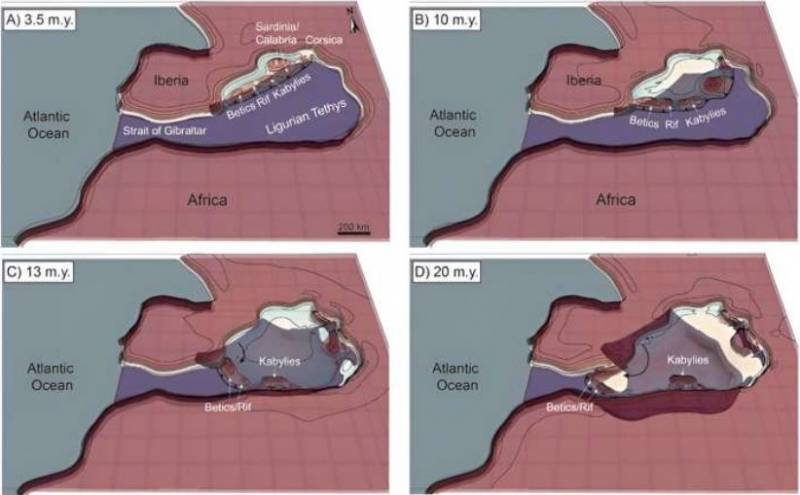
Subduction zones occur where one tectonic plate slides beneath another into the Earth’s mantle, generating intense pressure and heat that can lead to mountain building, earthquakes, and volcanic activity. The movement of the Gibraltar subduction zone could result in significant geological changes in the Atlantic Ocean, potentially creating a “ring of fire” characterised by frequent seismic and volcanic events.
However, it is important to note that these changes are part of long-term geological processes occurring over millions of years. It’s not about to suddenly fall into the sea tomorrow. The implications of such movements are profound, but the gradual nature of these changes means that they will not affect current populations in the foreseeable future.
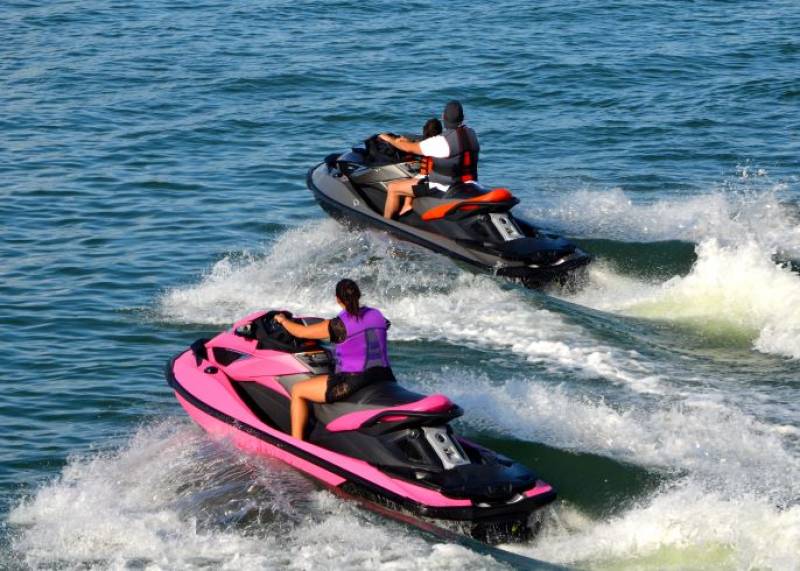 In the Cabo de Gata nature reserve in Almería, conservation groups are calling for restrictions on jet ski use to protect the local environment. The Coordinadora de Asociaciones de los Pueblos del Cabo de Gata, representing 13 neighbourhood associations of towns across Cabo de Gata, has requested that the use of jet skis in the coastal areas of the Cabo de Gata-Níjar Natural Park be prohibited or heavily restricted.
In the Cabo de Gata nature reserve in Almería, conservation groups are calling for restrictions on jet ski use to protect the local environment. The Coordinadora de Asociaciones de los Pueblos del Cabo de Gata, representing 13 neighbourhood associations of towns across Cabo de Gata, has requested that the use of jet skis in the coastal areas of the Cabo de Gata-Níjar Natural Park be prohibited or heavily restricted.They argue that jet skis pose safety risks to bathers and cause significant damage to the aquatic flora and fauna of this protected area. The groups have addressed their concerns in a letter to the park director, Salvador Parra, seeking coordinated actions to curb the use of these vehicles.
The conservationists’ plea highlights the ongoing conflict between tourism and environmental preservation. With the arrival of good weather, the natural park experiences an influx of jet skis, leading to increased noise and water pollution. The groups are calling for enforcement by the Park Management and Environmental officer to mitigate the impact of jet skis on the environment, in an effort to preserve the natural beauty and ecological integrity of the Cabo de Gata-Níjar Natural Park for future generations.
In a surprising and bizarre incident in Sevilla, singer Taylor Momsen was bitten by a bat during a live performance. Momsen, known for her role in ‘Gossip Girl’ and as the lead singer of The Pretty Reckless, was performing in support of AC/DC when the bat clung to her leg mid-concert. She initially asked the audience what they were pointing at before realising the bat was attached to her thigh.
Despite the shock, Momsen remained calm and continued performing until help arrived to remove the bat. She later shared images of the bite marks on social media and informed fans that she would need rabies shots.
Fans and social media users applauded Momsen for her composure during the unusual incident. Some even made comparisons to Ozzy Osbourne’s infamous bat-biting episode, dubbing her the “princess of darkness”!
ROCK AND ROLL MOMENT…in Sevilla Wednesday during “Witches Burn” a BAT 🦇 clung to my leg…in the moment I was performing and had no idea until the crowd kept screaming and pointing…yes he bit me…so rabies shots for the next two weeks 😖thanks the staff at the hospital who… pic.twitter.com/h53nw4mP8b
— Taylor Momsen (@taylormomsen) May 31, 2024
You may have missed…
- Barcelona restaurant wins best in the world.
The best restaurant in the world is in Spain! This is ‘Disfrutar’, a restaurant in Barcelona run by Catalan chefs Oriol Castro, Eduard Xatruch and Mateu Casañas, which has just been crowned as the best restaurant in the world 2024 at the gala ‘The World’s 50 Best Restaurants’ awards, held in Las Vegas. - Sun, Sea and Selling Houses returns!
Get ready for another exhilarating season of sunshine, sea, and house hunting as Darren and Natalie Brown of Micasamo Realty make their much-awaited comeback to Channel 4’s hit television series, ‘Sun, Sea & Selling Houses’! - 68-year-old British paedophile arrested in Cartagena.
A 68-year-old British man has been arrested in Cartagena after an International Arrest and Extradition Warrant was issued against him by the National Crime Agency of the United Kingdom for several crimes of sexual abuse of minors, which he allegedly committed in 2021 in the UK. - Sending your suitcase by mail: The new trick for avoiding airline luggage fees?
The summer holidays are fast approaching, and many of you are probably already mentally planning your vacation wardrobes. But this is easier said than done, since extortionate luggage charges and ever-stricter airline policies mean we often have to sacrifice fashion to save a few quid. But this time around, you can say goodbye to hefty baggage costs and hello to major savings, all thanks to a nifty little travel hack – sending your suitcase via postal service. - Navigating UK pension transfers to Spain.
The landscape of transferring UK pensions to Spain has continued to evolve, reflecting changes in regulations and the implications of Brexit. For British expatriates, understanding these updates is crucial to ensure tax-efficient and compliant pension management…
That’s all for this week. Thanks for reading and we’ll be back next week.
Bye!
Contact Murcia Today: Editorial 000 000 000 /
Office 000 000 000

























